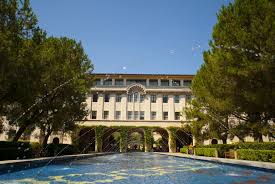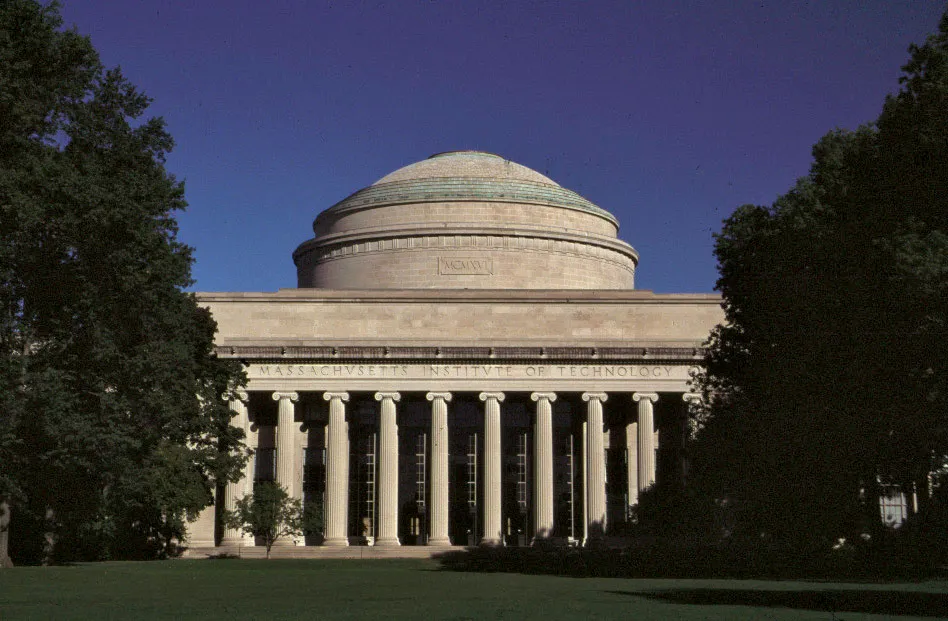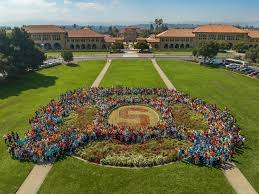The California Institute of Technology (Caltech)
Nestled in the heart of Pasadena, California, the California Institute of Technology, commonly known as Caltech, stands as one of the world’s premier institutions for science and engineering. Renowned for its rigorous academic programs, groundbreaking research, and a culture of innovation, Caltech has consistently ranked among the top universities globally. Despite its small size, with an enrollment of just over 2,000 students, Caltech’s impact on science, technology, and society is monumental. This article delves into the history, academic excellence, research contributions, and unique culture that make Caltech a beacon of innovation and excellence.
Brief History of Caltech
Caltech’s origins date back to 1891 when it was founded as Throop University by Amos G. Throop, a local businessman and politician. Initially, the institution was a vocational school offering courses in arts, crafts, and manual training. However, under the leadership of astronomer George Ellery Hale, the institution underwent a transformative shift in the early 20th century. Hale envisioned a university dedicated to scientific research and education, and by 1920, the institution was renamed the California Institute of Technology.
Hale’s vision attracted some of the brightest minds of the time, including physicist Robert A. Millikan, who became Caltech’s first president. Millikan’s leadership further solidified Caltech’s reputation as a hub for scientific discovery. Over the decades, Caltech has been home to numerous Nobel laureates, pioneering researchers, and influential thinkers who have shaped the course of modern science and technology.
Academic Excellence
Caltech’s academic programs are characterized by their intensity, depth, and focus on cutting-edge research. The institute offers undergraduate and graduate programs primarily in science, engineering, and technology. With a student-to-faculty ratio of approximately 3:1, Caltech provides an intimate learning environment where students work closely with world-class faculty members.
Undergraduate Education
Caltech’s undergraduate program is highly selective, admitting only a small number of students each year. The curriculum is designed to provide a strong foundation in the sciences and engineering while encouraging interdisciplinary exploration. Undergraduates are required to complete a core curriculum that includes mathematics, physics, chemistry, biology, and humanities, ensuring a well-rounded education.
One of the hallmarks of Caltech’s undergraduate experience is the emphasis on research. Students are encouraged to participate in research projects from their first year, working alongside faculty members on groundbreaking studies. This hands-on approach to learning fosters critical thinking, problem-solving skills, and a deep understanding of scientific principles.
Graduate Education
Caltech’s graduate programs are equally prestigious, attracting top talent from around the world. The institute offers master’s and doctoral degrees in a wide range of disciplines, including physics, chemistry, biology, engineering, and computer science. Graduate students at Caltech are at the forefront of their fields, conducting research that pushes the boundaries of human knowledge.
The close-knit academic community at Caltech ensures that graduate students receive personalized mentorship and support. The institute’s collaborative environment encourages interdisciplinary research, enabling students to tackle complex problems that require expertise from multiple fields.
Research and Innovation
Caltech’s contributions to scientific research are unparalleled. The institute is home to numerous research centers and laboratories that conduct cutting-edge research in a variety of fields. From space exploration to quantum physics, Caltech researchers are at the forefront of some of the most exciting and impactful scientific discoveries.
Jet Propulsion Laboratory (JPL)
One of Caltech’s most notable research facilities is the Jet Propulsion Laboratory (JPL), which is managed by the institute for NASA. JPL has been instrumental in the exploration of our solar system and beyond. It has designed and operated some of the most iconic space missions, including the Mars rovers, the Voyager spacecraft, and the Cassini mission to Saturn. JPL’s work has not only expanded our understanding of the universe but has also inspired generations of scientists and engineers.
Nobel Laureates and Pioneering Research
Caltech’s faculty and alumni have been awarded numerous Nobel Prizes in physics, chemistry, and physiology or medicine. These accolades reflect the institute’s commitment to advancing knowledge and addressing some of the most pressing challenges facing humanity.
For example, Caltech physicist Richard Feynman made groundbreaking contributions to quantum mechanics and particle physics, earning him the Nobel Prize in Physics in 1965. Similarly, Linus Pauling, a Caltech alumnus and faculty member, was awarded the Nobel Prize in Chemistry in 1954 for his work on chemical bonds and the nature of molecules. Pauling’s research laid the foundation for modern chemistry and had a profound impact on fields ranging from biology to materials science.
Interdisciplinary Research
Caltech’s interdisciplinary approach to research is one of its defining features. The institute encourages collaboration across disciplines, recognizing that many of the most significant scientific breakthroughs occur at the intersection of fields. For instance, the Resnick Sustainability Institute at Caltech brings together researchers from engineering, chemistry, biology, and environmental science to develop innovative solutions to global sustainability challenges.
Similarly, the Institute for Quantum Information and Matter (IQIM) at Caltech is a hub for research in quantum physics, quantum computing, and quantum materials. By fostering collaboration between physicists, computer scientists, and engineers, IQIM is advancing our understanding of quantum systems and developing technologies that could revolutionize computing, communication, and cryptography.
Unique Culture of Collaboration and Curiosity
Caltech’s culture is characterized by a deep sense of curiosity, collaboration, and a commitment to excellence. The institute’s small size fosters a close-knit community where students, faculty, and staff work together to push the boundaries of knowledge.
Honor Code
One of the cornerstones of Caltech’s culture is its Honor Code, which emphasizes integrity, trust, and mutual respect. The Honor Code governs all aspects of academic and social life at Caltech, creating an environment where students are empowered to take responsibility for their actions and uphold the highest ethical standards. This culture of trust and accountability is integral to Caltech’s success and contributes to a supportive and collaborative academic environment.
Traditions and Student Life
Caltech’s student life is vibrant and unique, with a range of traditions that reflect the institute’s quirky and innovative spirit. One of the most famous traditions is the annual “Ditch Day,” where seniors leave campus for the day, leaving behind elaborate puzzles and challenges for underclassmen to solve. This tradition showcases Caltech’s emphasis on creativity, problem-solving, and teamwork.
In addition to its traditions, Caltech offers a wide range of extracurricular activities, including student clubs, sports teams, and cultural organizations. These activities provide students with opportunities to explore their interests, develop leadership skills, and build lasting friendships.
Impact on Society
Caltech’s influence extends far beyond its campus. The institute’s research and innovations have had a profound impact on society, shaping industries, advancing technology, and improving lives. From the development of the first synthetic rubber to the discovery of gravitational waves, Caltech’s contributions have transformed our world.
Technological Innovations
Caltech’s research has led to numerous technological innovations that have revolutionized industries. For example, the development of the transistor by Caltech alumnus William Shockley laid the foundation for modern electronics and computing. Similarly, Caltech’s work in aerospace engineering has contributed to the development of advanced spacecraft, satellites, and propulsion systems.
Addressing Global Challenges
Caltech is also committed to addressing some of the most pressing global challenges, including climate change, energy sustainability, and public health. The institute’s researchers are working on innovative solutions to reduce greenhouse gas emissions, develop renewable energy sources, and improve healthcare delivery. Through its research and outreach efforts, Caltech is making a meaningful impact on the world and helping to create a more sustainable and equitable future.
Conclusion
The California Institute of Technology (Caltech) is a testament to the power of curiosity, collaboration, and innovation. With its rigorous academic programs, groundbreaking research, and unique culture, Caltech has established itself as a global leader in science and engineering. The institute’s contributions to knowledge and technology have had a profound impact on society, shaping the world we live in and inspiring future generations of scientists and engineers. As Caltech continues to push the boundaries of human understanding, it remains a beacon of excellence and a symbol of what can be achieved through dedication, creativity, and a commitment to the pursuit of knowledge.
Share this content:





Post Comment